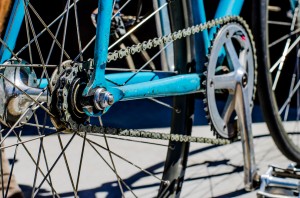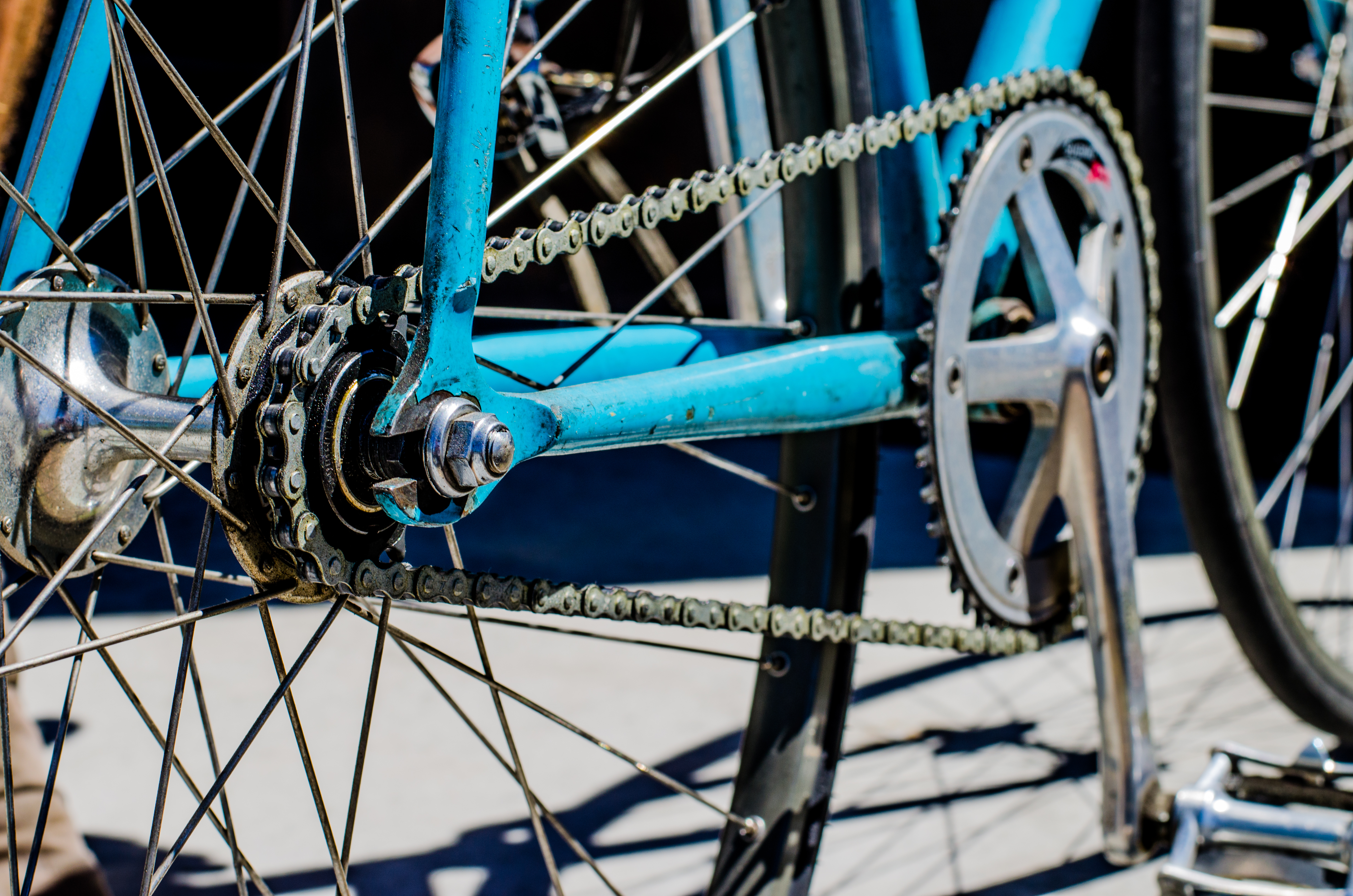
Utah’s bike community comes in all different forms: more low rider bikes, complete with hydraulics, are showing up. There are more guys in spandex, Lance Armstrong wannabes complete with clean-shaven legs, ascending canyons while downing energy gel. There is also a growing crowd of hipsters and skinny jeans-wearing urbanites seemingly infatuated with the idea of a brakeless bike with crankshaft directly connected to the movement of the wheel. Think of kids on tricycles racing downhill, feet flailing out on either side because their legs can’t keep up with the pedals. These are the “fixie” riders, the most hard core of whom ride even without brakes.
Jeremy Danger sums it up this way. “I don’t think it’s necessary to have a bunch of gears if you’re riding downtown. Riding a fixed gear bike makes me more aware of my surroundings and it’s easier and safer to use for around-town riding. I have a road bike, but I mostly use it for longer rides where shifting gears makes more sense. I don’t think any kind of bike is dangerous, I think it’s the operator that makes it dangerous.“ It’s true that fixed gear bikes tend to attract a younger crowd which seem to be more reckless. As far as fixed gear bikes go, you definitely have to learn how to ride them. I spent a couple of weeks practicing in parking lots before I took mine to the streets.”
To gain a bit of clarity on fixies, I stopped by the SLC Bicycle Collective and spoke with Owen Geary. “The first bikes made were more or less fixies. Back then they were called safety bikes. Olympic track bikes are where fixies originated. Bike messengers ride all over the city and beat the crap out of their bikes so they need something durable. They took to fixed gear bikes because they are easier to maintain and can take a pounding.” As bike messenger culture caught on and became popular (think messenger bags) more and more people started converting broken “geared bikes” over to fixed gear. The SLC Bicycle collective does sell fixies when they come in, which these days isn’t often, but they always equip them with brakes.
There has been some ebb and flow in the fixie fad and Salt Lake seems to be on the cusp of another boom. Chain stores like Urban Outfitters trying to keep up on the latest in what’s new and cool have started selling fixies that feature brakes, added in part to comply with U.S. laws. It is entirely possible to add brakes to a fixie, it’s just that most riders don’t feel it’s necessary and, admittedly, some leave them off to follow the fad. So, while the brakeless version of fixies might still be popular with daredevils and die-hard riders, the mainstream seems to be pushing fixies with brakes.







